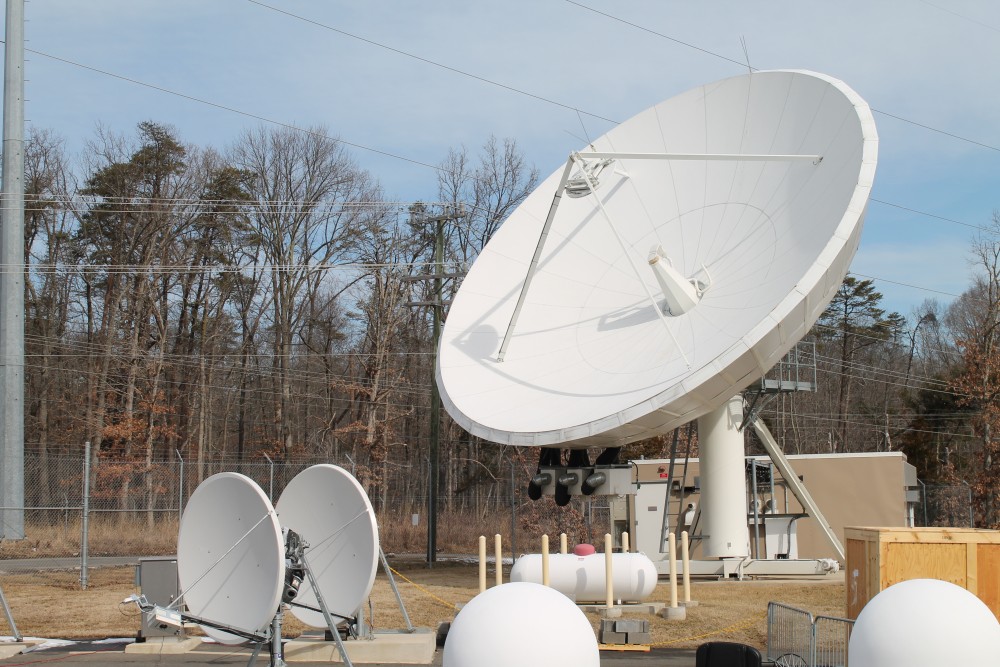In my previous article on the GovSat Report, I looked at the military’s use of Unmanned Aerial Vehicles (UAVs) and why they’ve become mission critical in the military’s efforts in Afghanistan, the Middle East, and elsewhere. I also discussed the role that COMSATCOM plays in the use of these vehicles, and why HTS is a more effective, efficient and resilient solution for connecting UAVs with their operators.
However, despite the benefits of HTS, the military is not yet in a position to take advantage of this advanced satellite technology. Let’s analyze why.
As we discussed previously, HTS satellites don’t use large, single beams that cover significant geographic areas. Instead, they use multiple spot beams that are smaller in coverage area and overlap slightly with each other to form a continuous coverage area. Since the beams overlap, each beam needs to use a different frequency or polarization to prevent interfering with the adjacent beams.
Since ISR platforms, manned or unmanned, cover great distances in a single mission, they travel through several HTS beams. As ISR platforms move from beam to beam, they must change frequencies or polarization. This creates a challenge for today’s UAVs as they are not outfitted with modern SATCOM equipment that enables them to do this.
Many of the UAVs that make up the military’s current fleet were procured a decade or more ago with SATCOM equipment optimized for wide area coverage beams. At the time, there was no need to change SATCOM frequency or polarization in flight. As a result, today’s UAVs simply are not capable of switching from spot beam to spot beam and cannot take advantage of the efficient and resilient capabilities of HTS.
 Although it’s not a simple or inexpensive fix, upgrades can be made to existing UAV fleets so that they can work with HTS. To accomplish this, the modems aboard UAVs and the associated ground systems can be upgraded to today’s advanced frequency agile terminals.
Although it’s not a simple or inexpensive fix, upgrades can be made to existing UAV fleets so that they can work with HTS. To accomplish this, the modems aboard UAVs and the associated ground systems can be upgraded to today’s advanced frequency agile terminals.
Unfortunately, the military has yet to pull the trigger on upgrading their UAV fleet to embrace this cost saving, higher efficiency satellite technology. This delay limits their ability to take advantage of the improved performance and higher value HTS capabilities offer.
With high throughput satellites coming online, the increasing need for high-performance UAVs, and the challenged government fiscal environment, now is the time for the military to take the first steps towards embracing HTS for UAV missions. And, thankfully, it’s a process that can be done incrementally over time.
High throughput satellites that are coming online today from COMSATCOM operators are hybrid satellites that offer both traditional GEO wide-area coverage and HTS spot beams. This ensures that traditional GEO satellite connectivity will be available for UAV missions as the upgrade process occurs, while providing flexibility to the military moving forward.
High throughput satellites are the future for much of the military’s communications needs and are especially well suited for UAV missions today and into the future. The time is now for the military to start taking the steps necessary to embrace this technology by upgrading their UAV fleet and ensuring that the proper ground and airborne technologies are in place for the transition to HTS. The investment in doing so will lead to significant efficiencies and cost savings in the end.
Also, click the links below for additional HTS information and resources:
- Discover the coverage areas for HTS GEO: SES-14, SES-15and SES-16
- Why Big Beams are a Big Deal to the Military – The GovSat Report
- How HTS investment today could spell serious savings for the military tomorrow – The GovSat Report
- Three New Birds for SES – Press Release
- What went into the design of SES first HTS satellite? – Q&A
